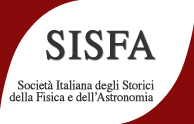Conveners
Gian Domenico Cassini: 400 anni dalla nascita / Gian Domenico Cassini: 400 Years After his Birth
- Chairperson: Ivana Gambaro
Gian Domenico Cassini: 400 anni dalla nascita / Gian Domenico Cassini: 400 Years After his Birth
- Chairperson: Fabrizio Bònoli
Gian Domenico Cassini: 400 anni dalla nascita / Gian Domenico Cassini: 400 Years After his Birth
- Chairperson: Valeria Zanini
The most important astronomical themes in the years spent by Cassini in Bologna concerned the problem of the “World Systems” and the physics that justified them.
His works were an important part of this history, making him one of the greatest astronomers of the seventeenth century.
A few decades had passed since the condemnation of Galileo, of his anti-Peripatetic physics and of the new...
In 1669, after many negotiations to keep his position at the Studium in Bologna, Giovanni Domenico Cassini left for Paris. The Italian astronomer and professor was called to France by Jean-Baptiste Colbert to evaluate a very important building under construction: the Observatoire royal, a royal palace, the highest expression of scientific observation and the only building for science built by...
In the early 1600s, the age-old problem of knowing the exact position on both land and sea became more and more urgent, and the great maritime powers, starting with Spain, instituted very large prizes for those who would find a workable solution. Galileo, after the discovery of Jupiter's satellites, thought of using the periodicity of the motion of the Jovian moons to propose a method that...
The 17th century was an interesting time in which marvelous discoveries were made, even at the cost of broken friendships among scientists. One peculiar aspect was the astronomical dispute over comets that occurred within astronomical circles. The 1660s marked the passage of a comet that many astronomers saw and studied, but only Cassini proposed an explanation that sparked a massive debate in...
From Giovanni Domenico (1625-1712) to Jean-Dominique (1748-1845), four generations of Cassini succeeded each other at the Paris Observatory from 1669 to 1794. Following the thread of the map-making project proposed by Abbot Jean Picard (1620-1682), we will consider the progressive association of the Cassinis with the general triangulation of France. In particular we’ll see how Picard's project...
Within the little-known Baroque series of paintings depicting the history of astronomy, which dates back to the early 18th century and is located in Rome's Palazzo Patrizi-Montoro, the final canvas dedicated to the 17th century, stands out and captures the viewer's attention. In this work, Giandomenico Cassini's long shadow looms over the scene, even though he does not appear in the...
Illustration of the project to restore the functionality of the meridian line of the Aula Meridiana of the University of Genoa (attributed to Father Corréard in the summer of 1771) by a working group internally constituted by UniGe

